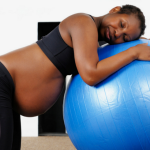
Caesarean Birth
A caesarean section is a surgical operation in which your baby is born through a cut in your abdomen and uterus. It is usually performed under spinal or epidural anaesthesia where you remain awake throughout. In some cases, it is necessary to use a general anaesthetic so that you are asleep throughout.
Planned versus emergency caesarean
Some caesarean births are planned in advance (elective caesarean) because of concerns with your pregnancy. These may include (but not limited to):
- Your cervix is covered by the placenta (known as placenta praevia)
- Pregnancy with triplets (and in some cases twins)
- Your baby is positioned bottom or feet first (breech) and cannot be turned
In other cases, the decision to perform a caesarean is made in an emergency (emergency caesarean):
An emergency caesarean may be recommended for the following reasons (but not limited to):
- concern for your baby’s wellbeing
- your labour is not progressing
- there are concerns with your health
- there is a life-threatening emergency for you or your baby
Whenever a caesarean section is recommended, your doctor should explain why it is necessary and describe any important complications. Risks will be explained to you when you complete the consent form for the operation, whether for an elective or emergency caesarean section. Do not hesitate to ask questions. It is important to make an informed decision.
What to expect:
- Throughout both an elective and emergency caesarean birth, you may have a support person present, unless there are complications, or a general anaesthetic is used.
- When you arrive in the operating theatre, there will be a few people present which is normal. All of them have an important role to play to ensure the safety of you and your baby. This includes midwives, obstetricians, nurses, pediatricians and other theatre staff.
- The operation usually takes 60 minutes. After your baby is born, if no resuscitation is needed, a baby check is completed by your midwife and/or pediatrician near you, then returned to you for cuddles before or when you arrive at the ward. The direct skin-to-skin will help stabilise baby’s temperature and enhance bonding.
- At the end of your surgery, with your baby remaining with you, you are transferred to the recovery bay where you and your baby are monitored for a short time, if staffing permits. After this, you will be transferred to the maternity ward with your baby for your postnatal stay. Occasionally your baby may need to be transferred to the ward with your allocated support person or partner.
Recovering after a caesarean section:
A caesarean birth is major abdominal surgery. Recovery takes time, and every person’s experience is different. You’ll need rest, gentle movement, and support as your body heals and adjusts.
In Hospital:
- Most people stay in for 2 to 4 days. You will be offered medications to help manage pain. Always let your healthcare team know if you require more support.
- You’ll be encouraged to get up and move gently as soon as you’re able – this helps prevent blood clots (deep vein thrombosis) and aids recovery.
- Your wound will be checked regularly. It’s important to keep the area clean and dry.
At Home:
- Rest and gentle movement are important. Avoid lifting anything heavier than your baby for up to 6 weeks.
- Keep your wound clean and dry. Wear loose-fitting clothes and under garments. Watch for signs and symptoms of infection (e.g. temperatures, redness, oozing and bad odor from the wound).
- Take pain relief as prescribed or recommended. Don’t wait until the pain is severe – as managing pain will help you move and care for your baby more comfortably.
- When breastfeeding your baby after a caesarean birth you may need to use pillows for support and find a comfortable area to be seated.
Remember:
Every recovery is unique. Be kind to yourself and ask for support where you need.
For more information visit:
- RANZCOG Caesarean Section Video: Video resources - RANZCOG
- Caesarean section (ranzcog.edu.au)
Related Topics

A vaginal birth is usually the safest option for you and your baby if there is no serious issue in pregnancy and

